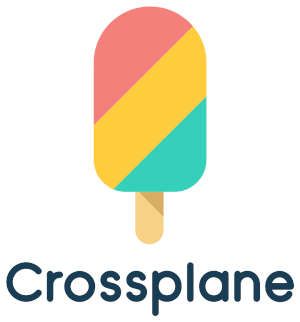Crossplane: (not) handling secrets when defining resources

3 min read | by Jordi Prats
The best way of handling secrets is not having to: When we rely on Crossplane to create cloud resources (such as a RDS instance) we can configure it to create a secret with it's credentials so that we don't have define any secret beforehand
As soon as the instance is created it will create a secret that we'll be able to mount on any Pod to be able to reach the database. We are going to use the following manifest to create a RDS instance:
apiVersion: database.aws.crossplane.io/v1beta1
kind: RDSInstance
metadata:
name: xplane-demo-rds
namespace: crossplane-system
labels:
vpc: vpc-12345678abc
spec:
providerConfigRef:
name: aws-provider
forProvider:
allocatedStorage: 20
dbInstanceClass: db.t4g.micro
dbName: xplanetest
vpcSecurityGroupIds:
- sg-98765431abc
dbSubnetGroupName: awswebk3s
deletionProtection: false
engine: postgres
multiAZ: false
region: us-west-2
masterUsername: jordi
skipFinalSnapshotBeforeDeletion: true
writeConnectionSecretToRef:
name: xplane-con-secret
namespace: crossplane-system
As soon as the instance gets created:
$ kubectl apply -f instance.yaml
rdsinstance.database.aws.crossplane.io/xplane-demo-rds created
$ kubectl get rdsinstance
NAME READY SYNCED STATE ENGINE VERSION AGE
xplane-demo-rds False True creating postgres 13.7 3m51s
We'll be able to find the secret that we've configured:
$ kubectl get secret xplane-con-secret
NAME TYPE DATA AGE
xplane-con-secret connection.crossplane.io/v1alpha1 2 103s
This secret is going to contain the username and the autogenerated password to be able to connect to the database:
$ kubectl get secret xplane-con-secret -o jsonpath='{.data.username}' | base64 -d
jordi
$ kubectl get secret xplane-con-secret -o jsonpath='{.data.password}' | base64 -d
Ep77wXFEa6HSjAuWISusFlCCkZY
Once the database becomes ready we'll be able to use them to connect to it:
$ kubectl get rdsinstance
NAME READY SYNCED STATE ENGINE VERSION AGE
xplane-demo-rds True True available postgres 13.7 17m
On the status key we'll be able to find the address and port to connect to it:
$ kubectl get rdsinstance xplane-demo-rds -o jsonpath='{.status.atProvider.endpoint.address}'
xplane-demo-rds.8acxgtpqgvjg.us-west-2.rds.amazonaws.com
$ kubectl get rdsinstance xplane-demo-rds -o jsonpath='{.status.atProvider.endpoint.port}'
5432
Putting all the data together we can use psql to connect to the database as follows (the postgres database we want to connect to is the one we have defined on the manifest as .spec.forProvider.dbName):
# psql -h xplane-demo-rds.8acxgtpqgvjg.us-west-2.rds.amazonaws.com -p 5432 -U jordi -d xplanetest
Password for user jordi:
psql (9.2.24, server 13.7)
WARNING: psql version 9.2, server version 13.0.
Some psql features might not work.
SSL connection (cipher: ECDHE-RSA-AES256-GCM-SHA384, bits: 256)
Type "help" for help.
postgres=> \l
List of databases
Name | Owner | Encoding | Collate | Ctype | Access privileges
------------+----------+----------+-------------+-------------+-----------------------
postgres | jordi | UTF8 | en_US.UTF-8 | en_US.UTF-8 |
rdsadmin | rdsadmin | UTF8 | en_US.UTF-8 | en_US.UTF-8 | rdsadmin=CTc/rdsadmin+
| | | | | rdstopmgr=Tc/rdsadmin
template0 | rdsadmin | UTF8 | en_US.UTF-8 | en_US.UTF-8 | =c/rdsadmin +
| | | | | rdsadmin=CTc/rdsadmin
template1 | jordi | UTF8 | en_US.UTF-8 | en_US.UTF-8 | =c/jordi +
| | | | | jordi=CTc/jordi
xplanetest | jordi | UTF8 | en_US.UTF-8 | en_US.UTF-8 |
(5 rows)
postgres->
Posted on 06/10/2022